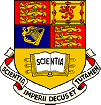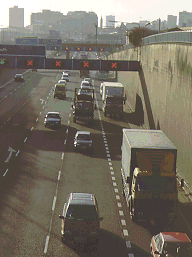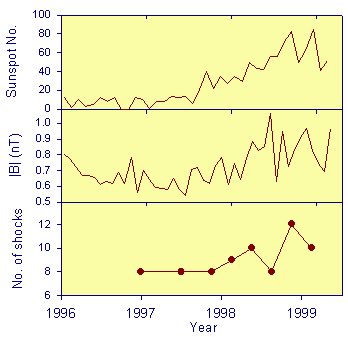
 |
|
News Page |

April 1999 |
This month's news stories:Online pollution forecastsUlysses & solar activity |
 PANIC: Daily Pollution Forecasts Now Online at IC
PANIC: Daily Pollution Forecasts Now Online at ICEvery year about 2000 people die because of the effects of airborne pollutants. Could these deaths be avoided? Is it possible to estimate the pollutant concentration in advance, so that residents can be warned, hospitals can be alerted, and other measures like traffic restrictions can be put into place?
There are several pollutants that are now predicted by our new model: PANIC.
We now do online one day forecasts of :
A number of meteorological variables influence the release and dispersion of these pollutants. One would expect wind speed and direction to be directly linked to pollutant concentration. It carries the pollutants away, but it may also be responsible for the transport of pollutants across the channel from the continent. Pressure is another important factor. Solar radiation is needed to fuel the creation of ozone. We use a neural network, which has been trained up on both the time series, or a set of input variables that include the meteorological data.
Ralf Toumi 9th April 1999
 Upturn in Solar Activity: Ulysses Magnetic Field Response
Upturn in Solar Activity: Ulysses Magnetic Field ResponseThis month it was the turn of the Ulysses magnetometer team to provide a 'science nugget' for use in publicising the results of the mission to NASA headquarters. We chose to highlight the current increase in solar activity. Here is the item that we submitted....
The upturn of solar activity (as seen in sunspot numbers, top panel) is expected to be witnessed by Ulysses, in particular in observations of the heliospheric magnetic field. We note (as shown in the plot, middle panel) that there is an increase in the magnetic field strength along with the increase in sunspot numbers. But sunspot numbers donít directly affect the heliospheric magnetic field Ė we need to look for other signs of increasing activity at Ulysses. Another way to measure the strength of solar activity is by the shock waves that are generated in the solar wind. We show a plot (lower panel) of the number of shocks seen at Ulysses in the past two years. Their numbers start to increase also at the same time as the sunspot number. This increase, even if not spectacular yet, points clearly towards the more disturbed conditions in the heliosphere that Ulysses will encounter in the next year or two.
Bob Forsyth & André Balogh 9th April 1999
View March or February news or return to Space and Atmospheric Physics home page